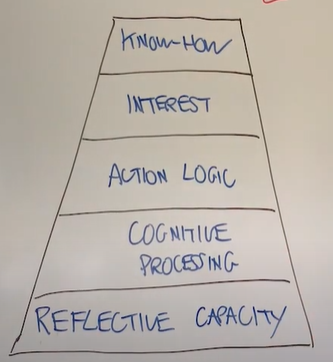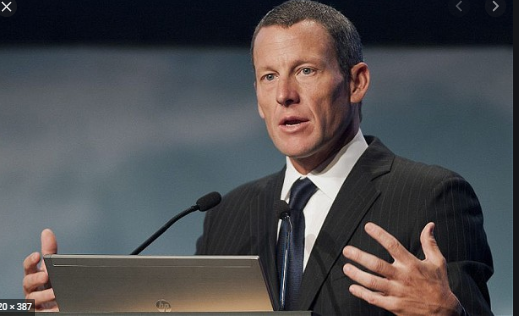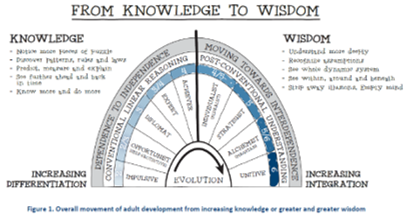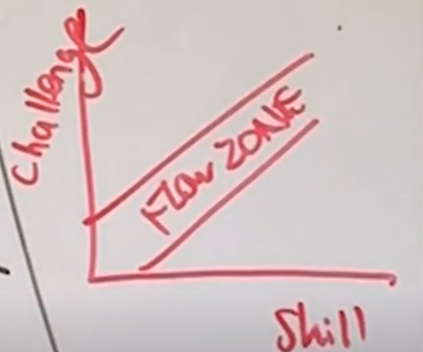Create the Capability in your team so the work gets done…without you!
(If you would prefer to watch me go through this on video rather than read, click here)
In my previous article, I introduced the Three Cs so your people can do their jobs, which allows you to do your job. They are:
- Clarity
- Capability
- Capacity
The previous article was on Clarity, this one’s about Capability – what each individual needs to bring to the party so they can do the work.
There’s no genius to the idea that for someone to be able to do their job (so you don’t have to do their job), they need the capability to actually do their job. What we need is a way to understand what this means. This is useful in hiring when you’re bringing people into a role, but also more commonly when you’re thinking about why isn’t the job happening the way you thought it would happen.
THE CAPABILITY PYRAMID
The pyramid shows five aspects that make up a person’s capability to do the job. And like all pyramids, the foundation is at the bottom. However, we’ll start from the top, and we’ll use the analogy of a professional cyclist to help understand.

Know-How
Nothing complex here – this is simply about whether the person knows how to ride a bike, and how cycling works. For managers, it means trainable basics such as facilitating meetings, getting clear on the work, conversations about performance, understanding systems and personal effectiveness.
Interest
The question here is whether the person actually likes riding a bike. Maybe if the interest doesn’t seem to be there, we could look into other parts of the pyramid or just have a conversation about whether they like riding bikes at all. Often people can self-select in these situations, especially if there’s other options that they can do, maybe within the same team or the same organisation.
Action Logic
This refers to the underlying worldview of how people make sense of the world that informs their actions. It’s from the field of vertical development, for this I use a model called the Leadership Maturity Framework (more on this later). An example is useful – one of the earliest stages is called ‘Opportunist’. Someone who’s centre of gravity is around here will, if they see $50 on the ground, will steal it. Why? Because the worldview informing their action is that it’s a dog-eat-dog world. It’s a jungle out there. In some environments, this would be exactly right. But this worldview is not really going to work in organisations.
Other stages refer to being driven by the need to get along, to follow the rules (Diplomat). Some people driven by the need to follow data (Expert). Some people are driven by the need to achieve goals (Achiever). Some people are driven by the need to look into how things are constructed, that it’s all relative and fits together (Pluralist). And later stages.
And remember, this is contextual. People are significantly shaped by their environments, in fact, survival itself can depend on it. The two can develop together like a double helix.
Different action logic may be more appropriate for different sorts of roles and… people can work on how they view the world, become aware of it and develop. For our cyclist, we want a bit of the Opportunist dog-eat-dog in them – a bit of mongrel. A bit of Expertise, maybe, hopefully a bit of Achievement and a bit of Diplomat in terms of being able to get along. But ultimately, in cycling, if there’s not a heavy dose of that opportunist, dog-eat-dog, they’re not going to be able to cope.

Engineering roles, for example, often benefit from an Action Logic centred around Expert. But if they’re driven by logic and data to the point where they’re not actually going to achieve the goals that they’re paid for, we could have a problem. So understanding where someone’s fundamental motivation comes from is helpful in getting them to be able to deliver what the job requires.
Cognitive processing
This is the ability to handle the weight of the decisions that are being asked of the role. Work is decisions and action. So, for example, where to start cleaning a room in order to do it quickly at the quality required is a much lighter weight of decision as whether to invest $5 million in trying to get our cleaning company up and running in Europe. Different decisions have different weights.
The key here is decisions. It’s easy to advise. Cognitive capability refer to when the true weight of accountability is felt. For example, in my local baseball career, I once ended up being the coach of the baseball team halfway through a game because both the actual coach and the assistant coach got kicked out of the game. Faced with a tactical decision….I made a dumb pitching change. If I’d been asked to advise, I probably would have given a different decision, but when I felt the weight of actual accountability, I didn’t think straight in the moment.
(By the way – how is ‘weight of decision’ measured? In time! The longer the timespan until successful completion of the task will be seen – the heavier the weight! This was a key insight of Elliott Jaques.)
For a pro cyclist, cognitive capability is analogous to lung capacity. If you’re one of the tiny percentage of people that has the lung capacity to compete as a professional cyclist in the Tour de France, and you’re entered into the local Adelaide Criterium, you’re going to get bored. You’ll get out the front and start mucking around and acting the fool in an effort to amuse yourself.

Flip it the other way. If you have normal person lung capacity, let’s say you’re fit, you’re a local Adelaide rider, but then you’re in the Tour de France itself. No matter how hard you try, you do not have the lung capacity to be in that race. You might have the thrill of being in the Tour de France, you might get the ego status, however, you’re going to be out the back. You’re not going to be able to keep up (unless you have some gear) and you’re going to end up feeling some version of anxiety and stress. If the ability to pay your mortgage depends on you being in that Peloton, you’re going to have a very awful experience. This is how cognitive processing can work, the ability to handle the weight, and without it…it’s not going to end well.
Reflective Capacity
Reflective capacity is the ability to say, “maybe the problem here is me.” For a cyclist having difficulties; perhaps they’re not getting along with the team or not able to get people on board with their ideas; if they can make the choice that the issue is them, they have a chance to make things better. If they think (and can often prove!) that the problem is everyone else, then that problem is not going to change. This is why Reflective Capacity sits at the base of our pyramid because someone who has this has the foundation for development.
HOW TO ADDRESS THE FIVE ASPECTS
Addressing Know-How
Simple! Provide opportunities for training and give people experiences. Remember, experiences are better. People get a lot more interested in learning how to drive the tractor when they are given the job of ploughing the field, and get to find out for themselves that they need to learn something. Now send them to that training or email that article.
Better yet, assign people projects that are going to require them to learn something. Set up your own school of hard knocks!
Addressing Interest
Have a conversation about what interests the person and what sort of work is possible. At the very minimum, you’ve at least established a point of conversation if things don’t improve and you have to come back to this. This is an adult conversation between colleagues – get curious, not judgy.
Addressing Action Logic
I use a tool called the Leadership Maturity Framework developed by Dr Maja Stanojevic-Andre. Here’s one way the model depicts the stages:

Such a tool helps with both yourself and the individual understanding ‘where they are coming from’.
While you don’t want to be drawing conclusions without knowledge of how such a model works, you can still have a conversation with people and ponder what they see as where the truth lies and what drives them. For example, is it the data, is it achieving goals or do they seem to be driven by fitting in and following rules? Understanding the ‘values glasses’ that someone is wearing…as well as your own can often be a key that unlocks both better performance and starts significant development.
Addressing Cognitive Processing[1]
I use a tool called MCPA, or Modified Career Path Appreciation, provided by trusted associates I have worked with for years. This provides an external angle on the weight of decision that someone can best handle now, and in the future. The goal of this is to help the person and the organisation work together to help them find flow.

The above diagram is by Mihaly Csikszentmihalyi (Mee-hi Cheek-sent-mee-hi) in his book Flow. The vertical axis is about the challenge of a job, or level of complexity, or weight of decision. The horizontal axis he calls ‘skill’, but we can see that as the Cognitive Processing of the person. We want to put people in the flow zone where the challenge and the cognitive processing ability is about the same
And that’s the goal of this…finding flow. Not to become the most powerful person in the land, but to put people into the flow zone. That’s the zone where the magic happens.
“Understanding it all better has helped me so much personally in feeling comfortable with my own capability and not feeling like I ‘should’ be operating at a different level just because there’s a career pathway in an ever upward trajectory”.
Email from client just last week
So, we have a conversation with people about flow. And, while you can get this assessed externally, research shows that the judgment of a manager and the manager’s manager, who’s worked with someone for a period of time, correlates very strongly with the view of external assessments. This does not mean you get to make judgements of what ‘level of cognitive processing’ someone might be. You are not a trained MCPA practitioner. But you very much can have a view on the level of work in which someone might find flow based on what you have observed in terms of handling work over at least 18 months.
Addressing Reflective Capacity
Here, we want to have what I call ‘mirror conversations’ where people are actually asked to consider what their role in something might be. External coaching can be valuable for some, and can be linked to the Leadership Maturity Profile as a tool to help people get an angle on themselves. This is a different type of external coaching to where people are given know-how, it is about helping people to look at what their role in the situation is. In my practice, I usually provide a series of sessions with both types of coaching so people can get know-how while developing their own reflective capacity and fundamental worldview.
In summary, use the Capability Pyramid as a way to ponder what’s really going on when there is a gap between what you wanted and what you got; when they just don’t seem to be able to do what the job requires. Whenever the pyramid is in place, and when combined with the other two Cs of Clarity and Capability, your people will be able to do their job. This means you’ll be able to do your job….better for everyone.
Good luck!
Why not get in touch right now to start getting your people into their own Flow Zones? Just click here to send me an email.
[1] I was first introduced to this by The Working Journey many years ago, Verena Maclean is one of the globe’s most accomplished practitioners
